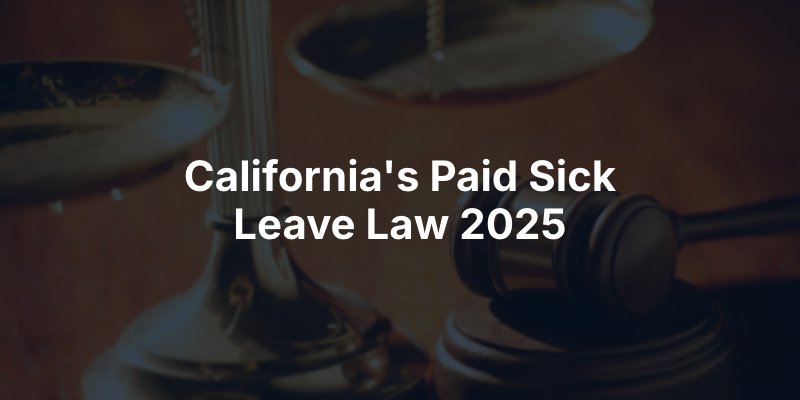California’s paid sick leave law, part of the Healthy Workplace Healthy Families Act, underwent significant changes starting January 1, 2024. As of 2025, the regulations continue to set the standard for employee protections across the state.
If you believe your employer is not following California’s paid sick leave laws, contact Aegis Law Firm to schedule a free consultation today.

New 2025 Enhancements
- Expanded qualifying reasons: Paid sick leave can now be used for jury duty, witness appearances, and emergencies experienced by a designated individual.
- Agricultural worker protections: Rights extended for sick leave use during dangerous conditions.
- Broader victim protections: Sick leave eligibility expanded for domestic violence, sexual assault, and stalking situations affecting employees or their families.
These improvements support worker rights by extending paid protections to more people facing illness, legal obligations, or emergencies. Since there is no federal mandate for paid sick leave, California sets a strong standard.
Minimum Accrual and Usage Requirements
- At least 5 paid days (40 hours) per year: Employers must provide either accrual-based or front-loaded sick leave, ensuring a minimum of 24 hours (or 3 days) by the employee’s 120th day and the full 40 hours (5 days) by their 200th day of employment.
- Accrual method: One hour of paid sick leave per 30 hours worked, up to the annual cap.
- Front-loading option: Employers can grant the 40-hour entitlement upfront instead of tracking accrual, eliminating carryover requirements.
Carryover and Caps
- Unused leave must carry over year to year, up to a cap of 80 hours (10 days) annually.
- Employers using front-loading do not have to allow additional carryover beyond the provided leave.
Permitted Uses of Sick Leave
Employees may use accrued sick leave for:
- Personal or family medical care, illness, prevention, or treatment appointments, including for parents, children, grandparents, siblings, domestic partners, and even a designated individual under FEHA.
- Mental health care visits and counseling.
- Domestic violence, sexual assault, or stalking-related needs such as medical attention, counseling, or legal actions.
- Agricultural workers: As of January 1, 2025, employees in agriculture may use sick leave during emergencies like smoke, heat, or flooding conditions.
- Jury duty or court witness appearances and related legal matters.
Employee Protections and Employer Obligations
No Retaliation
Employers cannot punish or demote employees for using sick leave.
Notice and Tracking Requirements
Employers must post mandatory DLSE notices, provide individual sick leave balances on pay stubs or separate documents on paydays, and give employees written notice at hire.
No Forced Use
Employers may not mandate employees to use sick leave when taking time off; the choice remains with the employee.
Verification Restrictions
The employer cannot require a doctor’s note for leave unless there is a valid reason to doubt the leave’s legitimacy—and only after accrued leave is exhausted .
PTO vs. Paid Sick Leave
California allows employers to meet sick leave obligations through combined PTO plans, but only if they meet or exceed the state’s minimum accrual and carryover standards. Employers should separate PTO and sick leave policies to avoid misclassification and unnecessary restrictions.
If your workplace has not adjusted its policies to meet these 2025 legal changes, it may be out of compliance. Employees who face denial or retaliation may have legal recourse. Contact us to discus your legal options today.
